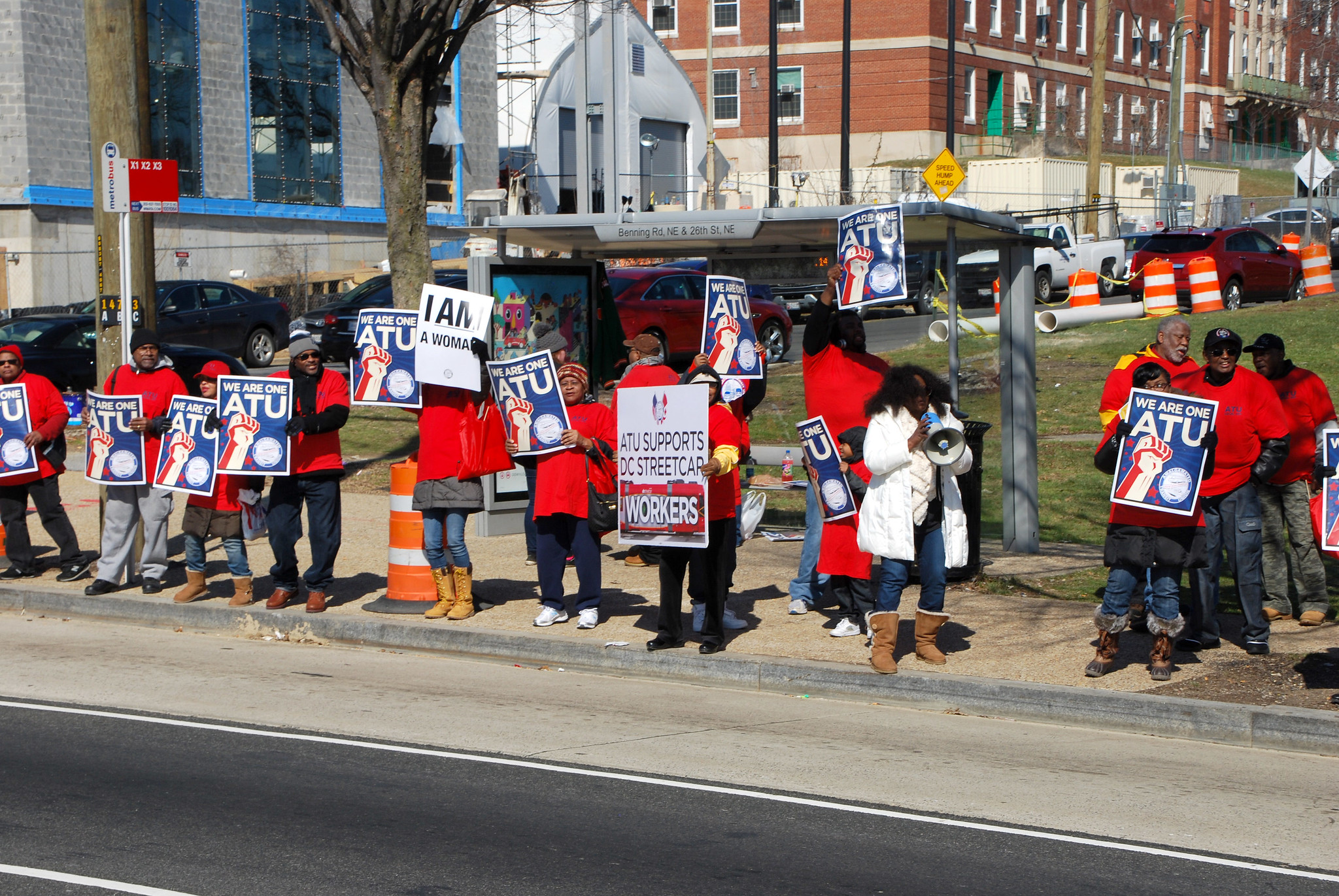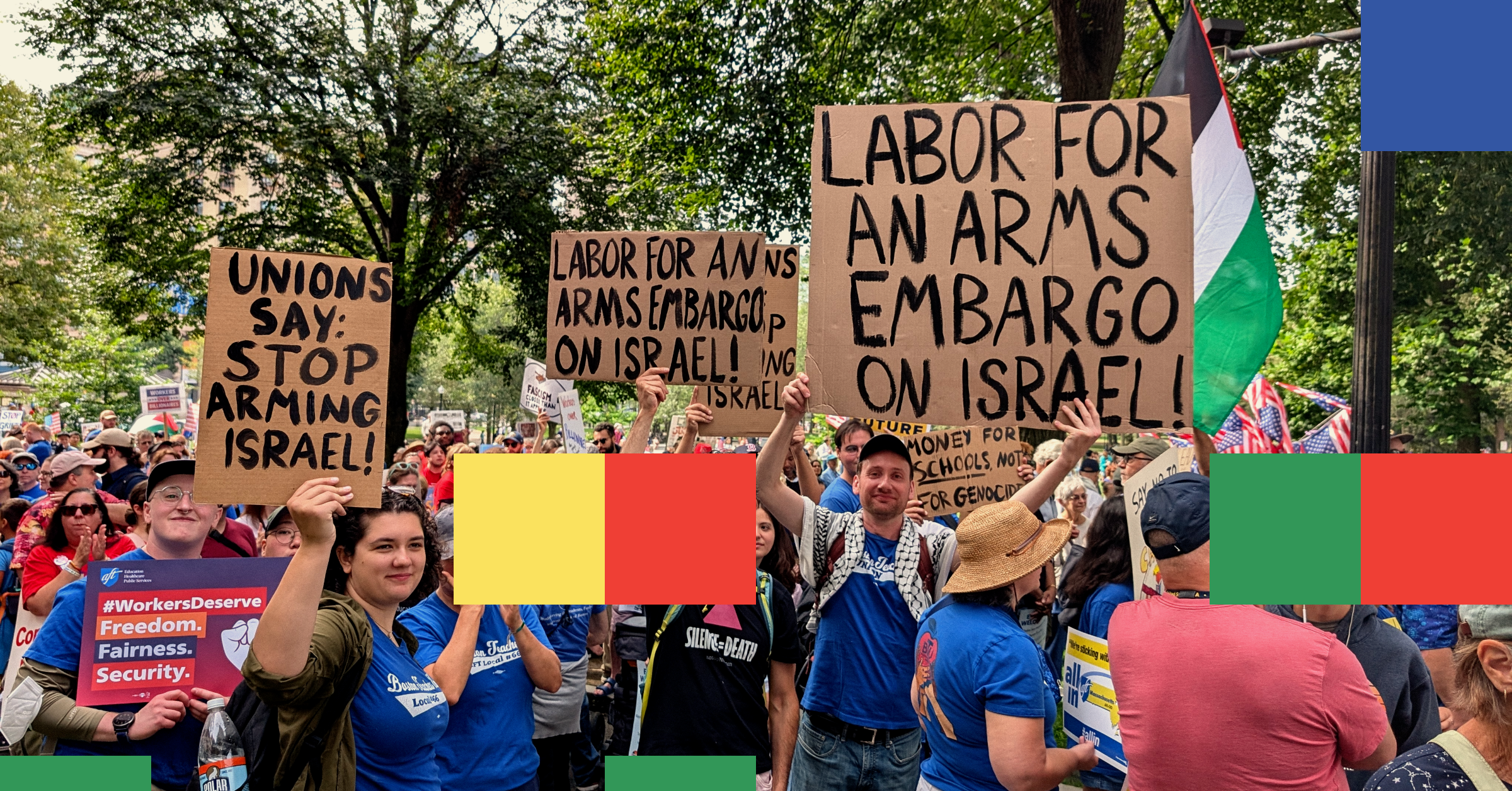Unions are weak in the U.S. today. Back in the 1960s, roughly one in three workers carried a union card. Today, it’s just 10.5 percent overall and 6.4 percent in the private sector.
Even in their weakened state, unions still manage to win more for their members than their non-union counterparts. Union workers earn more on average and have better benefits and greater job security. But decades of government and employer attacks have taken their toll. Far too many unions today are stuck in a defensive crouch, focused on protecting what they’ve got instead of trying to expand working-class power more broadly. Meanwhile, most socialists, like most workers, work in non-union workplaces, making it hard to get involved with existing unions.
Given this state of affairs, why would socialists focus their efforts on the small minority of already-union workers? Wouldn’t it make more sense to focus on organizing the vast majority of unorganized workers? Shouldn’t we be doing both?
Any serious effort at building a powerful socialist movement in the U.S. will have to involve transforming existing unions and dramatically expanding their ranks. So in that sense, we do have to do both.
The question is how. Both tasks are incredibly hard, and we have a long way to go before achieving either of them. Also, even with DSA’s impressive growth in recent years, the existing Left remains far too small to be up for the task. More importantly, the existing socialist movement is largely cut off from the working class, which has hobbled both labor and the Left.
We need a strategy that offers a viable game plan for achieving these goals of transforming unions and organizing the unorganized, one that’s coherent and compelling enough to allow us to set priorities and stay focused on what we aim to achieve.
That’s what the rank-and-file strategy aims to do. It starts from three core premises: First, that a strong, organized working class is the only force capable of building socialism. Second, that a strong, organized working class does not just happen but must be created. And third, that a strong, organized working class is created through collective struggle.
Unions are central to creating a strong, organized working class through collective struggle. Historically, they have been best able to do this with the help of a dense layer of respected workplace leaders, sometimes called a “militant minority.”
The militant minority is not the loudest, most radical people on the job. Nor is it necessarily made up of committed, self-identified socialists. Rather, it is composed of what Jane McAlevey terms “organic leaders” — those key individuals who are respected and trusted by their peers — who are able and willing to lead a supermajority of their co-workers to fight the boss. Socialists have played key roles in cultivating, organizing, and sometimes leading militant minorities but always as part of broader coalitions.
The problem is that decades of union decline have hampered unions’ ability to play this role. This was partly the result of the relentless employer attacks that escalated in the 1970s and 1980s, but it was also due to internal union struggles in the aftermath of World War II that largely liquidated the workplace-based “militant minority,” separating the Left from labor and leaving more conservative, cautious union leadership in charge.
That’s why proponents of the rank-and-file strategy argue that the central task facing socialists today is to rebuild the link between the Left and the working class, with the specific goal of identifying, developing, and expanding the layer of workplace leaders who are primed to fight the boss.
The Militant Minority in Recent Times
But again, the question is how. Rank-and-file strategy proponents have prioritized tactics that include getting rank-and-file jobs in unionized workplaces, forming and joining reform caucuses to win leadership in and transform existing unions, and building rank-and-file, cross-union education and organizing networks such as Labor Notes. As part of union reform efforts, many have run for elected leadership. Elected reformers have created openings for union staff to help develop workplace leaders.
These efforts have yielded mixed results. Existing unions still have a lot of reforming to do, a lot of workers remain unorganized, and the Left remains largely divorced from the working class. Does that mean that it’s time to rethink the rank-and-file strategy’s tactical repertoire?
Clearly we should be open to new ideas and adapt our tactics to changing political and economic terrain. But we must make these changes in light of our strategic goals, and choose our priorities accordingly.
While recognizing the limits of what the rank-and-file strategy has accomplished so far, we can also say that it has played an essential role in many of the all-too-rare labor victories we have seen in recent years. From the 1997 UPS strike to the 2016 Verizon strike to the teacher strikes in Chicago (2012) and Los Angeles (2019), workplace leadership has been key, and much of that was built thanks to the work of reform caucuses, reform leadership, and respected workplace militants. The rank-and-file strategy can move the needle in the right direction.
Would it make sense to supplement or even supplant this existing work with a focus on organizing the unorganized? Perhaps, but not before asking a few questions.
Alternatives to Prioritizing the Rank-and-File Strategy
First, it’s important to clarify what “organize the unorganized” means concretely for DSA members. Generally it has meant one of three things. First, DSA members seeking jobs as union staff organizers. Second, DSA members “salting” a targeted unorganized workplace (i.e. getting jobs there with the intent of forming a union). Third, DSA members seeking to organize the non-union workplaces where they already work. In the latter two cases, there is the additional question of whether to organize with an existing union or create an independent union. Either way, some DSA chapters have created “Worker Organizing Committees” to coordinate independent organizing.
Each of these approaches has real benefits. They can teach those doing the organizing valuable skills you just can’t learn from a book. And of course, successful organizing campaigns can make a big difference in the lives of the workers who get organized. Still, each approach has limitations.
Those who pursue the staff route can do good work — the role of experienced staffers in helping build up workplace leadership was powerfully demonstrated, for instance, in the Los Angeles teachers strike. But this type of staff work is only possible if you’re employed by a local or international that is already committed to bottom-up organizing.
Staff have very little room to implement programs or policies without the support of the elected leaders who pay their salary. Unfortunately, militant, organizing unions remain few and far between. Even among these unions, too many tend to treat their staff as disposable resources, leading to high rates of organizer burnout. It is hard to commit to being a staff organizer for the long term. And while Left staffers can play an important role in building union power, their ability to link their labor organizing to broader socialist organizing like recruiting rank-and-filers to DSA or taking the lead on Labor for Bernie activities can vary widely.
Salting a new workplace or organizing your current workplace both offer greater room for organizers to maneuver than staff jobs, but these approaches come with their own limitations.
First is the question of resources. It is hard to overstate how difficult it is to organize a union in the U.S. today. Labor law is stacked against workers, and there is a multi-million-dollar “union avoidance” industry made up of high-priced lawyers and consultants whose sole purpose is to prevent workers from unionizing. Of course, employer responses vary — the modest uptick in media and tech worker organizing, for instance, has not been met with the same type of full-throttle bosses’ offensive directed at, say, Amazon or Walmart workers. But most workers seeking to unionize can expect to be systematically threatened, harassed, intimidated, and even fired.
The fact that unionizing is hard does not mean that we should shy away from it. Indeed, the reason employers fight it so hard is precisely because of how much it can change the balance of power. But it is essential to understand the degree of difficulty before embarking on a campaign in a workplace of any size. Unions devote millions of dollars and potentially dozens of staff to new organizing campaigns. DSA lacks the resources and capacity to support this kind of organizing for anything beyond a few small workplaces.
This brings us to a second question, that of scale. As life-changing as each individual organizing victory can be for those involved, we cannot organize millions of workers one small shop at a time. At a minimum, there should be a plan to leverage smaller shop victories to organize other shops in the same sector.
Which raises a third question, that of strategy. A long-term plan to organize the unorganized cannot simply involve organizing whichever groups of workers express interest in organizing or those we, from outside, believe need it most. Rather, a real plan should prioritize workers who are positioned in the workforce and the economy to best build sustained power against the employers and, as such, serve as a lever for inspiring and organizing other workers. This is not to say that these workers are better or more deserving than others. Rather, they are the ones who are more likely to allow us to build on victories to organize ever-larger groups of workers.
The questions of resources, scale, and strategy are daunting, but they must be answered. In doing so, it becomes clear that any campaign to organize the unorganized at the necessary scale must involve existing unions. They are the only organizations with the resources and capacity to handle organizing of this scale. Of course, many have criticized the way that existing unions have (or have not) used their resources and capacity to organize, with good reason. But this merely reinforces the importance of transforming them, rather than trying to sidestep them.
The Rank-and-File Strategy and New Organizing
Recent examples show how this can work. The 2018 teachers’ strikes in right-to-work “red” states organized thousands of previously disengaged teachers to join unions — and into active struggle against the boss and the state — for the first time. Meanwhile, teachers’ unions in Chicago and Los Angeles have leveraged their strike victories not only to engage their existing members but to organize charter school teachers. That new organizing would have been impossible without the prior efforts of union activists, many of them socialists, who built movements and organizations that challenged and transformed existing unions.
In a broader sense, these efforts were all instances of organizing the unorganized, since most existing union members in these cities and states were not meaningfully participating in their unions before these reform campaigns and strikes. There’s a difference between being unionized and being organized.
To be sure, new organizing on the scale we’re talking about will not only transform existing unions but will likely create new unions, and even new forms of unionism. But these new forms will almost certainly emerge from already existing ones. Historically, this has been the case: The Western Federation of Miners gave birth to the Industrial Workers of the World. The United Mine Workers incubated the industrial unions of the Congress of Industrial Organizations. The public union upsurge of the 1960s and 1970s started with the transformation of already existing unions and associations of teachers, public employees, and postal workers. More recently, the “red state” teacher strikes have shown how union and non-union rank-and-file educators can creatively mobilize in conjunction with (not in opposition to) existing unions, even when faced with right-to-work laws, very low union density, bans on strikes, and the absence of collective bargaining.
In sum, organizing the unorganized must be an integral part of a rank-and-file strategy, not something separate or counterposed to it. As the primary vehicles available for organizing large numbers of workers, existing unions need to be transformed into organizations capable of leading the charge. The fight to transform those unions will likely lead to new organizations and new forms of organization, but we have to start with what we’ve got.
Tasks for DSA
So what does this mean for DSA chapters today? The intertwined goals of transforming unions and organizing the unorganized are lofty, but there are concrete steps we can take.
1) Figure out where existing DSA members work. Take a survey of DSA members. What kinds of jobs do people do? What industries are they in? Who are the organic leaders at their workplace? Who is a union member? What unions are they in? Who could be plugged into existing union reform efforts where they work? Who might be available to get a job in a workplace where union reform efforts might be possible? Who works in a workplace that could be organized? The answers can help chapters set strategic priorities.
2) Set organizing priorities. Using information from the member survey, chapters can figure out what kinds of workplace organizing make the most sense in their area. They may want to encourage and organize members to get rank-and-file jobs in strategic industries like education, logistics, or healthcare. If DSA members are already in shops that are in a realistic position to unionize, we should actively support their efforts. In those relatively rare cases where there are positions open in militant unions focused on rank-and-file empowerment, it may make sense to connect DSA members to these staff positions. In other cases, chapters might get more creative, perhaps organizing meet-ups to bring together workers, both union and non-union, in a given occupation or industry.
All of the tactics laid out above, however, should be assessed with an understanding of the questions of resources, scale, and strategy. Supporters of the rank-and-file strategy don’t oppose any of these tactics — all can, in certain circumstances, be effective.
But politics is always about prioritizing; there is only so much we can do with our limited time and resources. Simply asserting that DSA should “do everything” when it comes to labor means sidestepping the strategic debate. Just as the art of cooking relies on choosing the right proportion of ingredients for a given dish, so too should DSA’s labor strategy be based on a clear assessment of the relative weight to give to different labor organizing tasks, given our current political context, DSA’s size, and its relationship to the rest of the working class.
3) Support existing unionization efforts and strikes. Critics of the rank-and-file strategy often raise the valid point that we need to find ways to involve the vast majority of DSA members who are not union members in helping rebuild the labor movement. One way to do that is for DSA to systematically build support for existing unionization efforts in our communities and for strikes when they occur. Such activities should be a priority of all DSA chapters, and all members, not only labor working groups or existing DSA union activists. Not only can our support make a big difference, but these activities can introduce our members to the realities of actually existing unions and the challenges thereof.
4) Educate about labor’s strategic role in building socialism. Given the historic divide between the Left and the working class, many DSA members are on the outside looking in when it comes to organized labor. While there can be no substitute for organizing, it’s important to supplement this work with education on the history, theory, and strategy of worker organizing.
5) Connect with existing resources. There is no need for DSA members to reinvent the wheel. Author and organizer Jane McAlevey is organizing a national series of zoom calls for DSA members on strategic organizing (the last one will be July 10), and Labor Notes runs “Troublemakers Schools” in cities around the country. Participating can teach organizing skills and help chapters develop their connections with local activists.
While we should remain tactically flexible and support existing unionization efforts, we cannot talk about organizing the unorganized at a meaningful scale without talking about transforming the unions into which those unorganized workers will be organized. And transforming those unions starts with rebuilding a militant leadership layer in union workplaces. That is a necessary part of any strategy that stands a chance to win.




